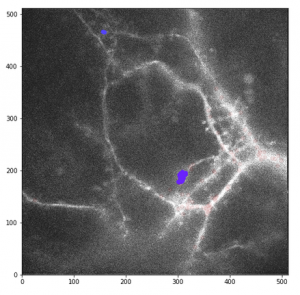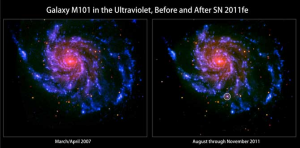As a second year PhD student in the David A. Dunlap Department of Astronomy and Astrophysics at the University of Toronto. Bolin focuses on applying new statistical methods from other disciplines to astronomy – as well as utilizing astronomy methods in other disciplines.
Bolin completed an honours biological physics degree and an ecology and evolutionary biology degree from the University of Toronto before beginning his PhD.
When he isn’t doing astronomy, he likes to raise chickens and dart-frogs.
How did you first become interested in Astronomy and Astrophysics?
I think that every type of science has thousands of unanswered questions and wonderful mysteries. It’s easy for someone to get hooked on any of them – I was certainly one of those people. More specifically, during my time as an undergraduate, I had the wonderful opportunity to work with Professor Kristen Menou on modelling exoplanet atmospheres. At around the same time, I heard Professor Renée Hložek do a talk on balancing research in astronomy with personal life. Both of these researchers have inspired me in my studies.
Can you tell us a little bit about your specific field of research?
I am interested in detecting transients, which, broadly speaking, are short-lived signals in the sky. Currently, I am working on detecting Fast Radio Bursts, extra-galactic radio emissions of unknown physical mechanism in data from the CHIME telescope. I am also working with Dr Flavie Lavoie-Cardinal’s team at l’Université Laval on using the CLEAN algorithm, a technique commonly used in radio astronomy, to identify synaptic calcium transients, fast bursts of calcium in our neurons that may be responsible for learning.
What’s the most exciting thing about your research?
It has to be all interesting people I get to talk to. My research has given me the opportunity to work with not only experts in astronomy and statistics, but also experts in neuroscience and microscopy. Since our data can look so similar – and consequentially, face similar challenges – it is really interesting to see how neuroscientists tackle problems like background modelling. Sometimes, it keeps me up at night wondering whether there’s some amazing statistical tool that we just don’t use, but is common practice in some other discipline.
What do you hope will be your next step, professionally?
Since I am only in the second year of my PhD, I expect my astronomy projects and interests to keep evolving with every new bit of progress. I would love to continue working in a scientific environment where I can bounce around ideas with experts from different disciplines.

A simulated fast radio burst (left) with additional noise added (centre) detected using my algorithm (right). Credit: Bolin Fan.

One frame showing calcium transients (blue) detected in rat neuron cultures. Millions of these happen in your brain every day! Data credit: Flavie Lavoie-Cardinal and Associates. Image credit: Bolin Fan.
_________________________________________________________________________________________



